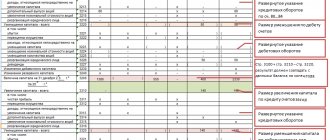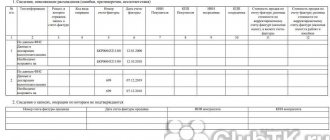In accordance with the current legislation of the Russian Federation, economic entities required to maintain accounting records submit annual accounting (financial) statements to various government bodies: as a general rule, to Rosstat and tax authorities. In addition, other legislative acts provide for the submission of accounting (financial) statements by organizations engaged in certain types of economic activities to other government bodies and supervisory authorities. The legislator decided to remove the excessive administrative burden on reporting entities and the duplication of functions of government bodies in receiving and processing annual accounting (financial) statements.
Read about what specific changes have been made to the procedure for submitting annual accounting (financial) statements and where to submit these statements for 2021.
Federal Law No. 444-FZ amended Federal Law No. 402-FZ . Please note that the changes have different effective dates, with the document beginning on November 28, 2018.
Who is required to submit financial statements for the year?
Any organizations must submit to the relevant authorities a set of annual financial statements for 2021, except:
- public sector organizations;
- Bank of Russia;
- religious organizations;
- organizations reporting to the Bank of Russia;
- legal entities whose reports contain information classified as state secrets;
- organizations - in some other special cases established by the Government of the Russian Federation.
All other legal entities must submit annual accounting reports to the Federal Tax Service at their location.
IMPORTANT!
Accounting statements for 2021 with information constituting a state secret, and statements with other restricted information approved by the Government of the Russian Federation, still need to be submitted. Not to the Federal Tax Service, but to the statistical authorities.
Deadline and methods of submission
Financial statements are submitted by organizations annually before March 31 of the year following the reporting year.
You can submit reports in different ways:
- Directly to the Federal Tax Service. In this case, the filing date will be considered the day the reporting is submitted.
- By mail. In this case, the day the reporting is submitted is the date of mailing (usually a valuable letter with an inventory).
- In electronic form via TKS. The date of submission will be the date indicated on the dispatch confirmation.
How to submit a book. reporting for 2020
Since 2021, the Federal Tax Service has been forming the State Information Resource for Accounting (Financial) Reporting (GIRBO, BFO Resource). In this regard, financial statements for 2021 can be submitted to the tax office only in electronic form via TCS channels .
IMPORTANT!
The same procedure has been established for submitting an audit report to the tax office for accounting reports for 2021 and subsequent years (Part 5 of Article 18 of the Law “On Accounting” dated December 6, 2011 No. 402-FZ).
Exceptions to the filing of annual reports for 2021 strictly electronically are made only for organizations that were reorganized or liquidated during 2020. This is due to the fact that the data from these reports does not fall into GIRBO. Therefore, the Federal Tax Service, in letter dated November 25, 2019 No. VD-4-1/24013, recommended formats and machine-readable accounting forms for such organizations to submit their latest reports to the Federal Tax Service.
The procedure for submitting financial statements for 2021 was approved by order of the Federal Tax Service dated November 13, 2019 No. ММВ-7-1/569. Let us present its main aspects.
Statement of changes in equity
To show changes in capital, there is Form 3 in the balance sheet. This displays information regarding the organization’s equity capital, which includes:
- Extra capital;
- retained earnings;
- authorized (share) capital;
- other reserves.
The report also displays data on own shares that were purchased from shareholders.
Form number 3 has 3 sections:
- Movement of capital
This table clearly illustrates changes in capital over 2 years - decrease or increase, what influenced it.
- Adjustments related to changes in accounting policies and correction of errors
The section contains information about adjustments to capital that are associated with various changes in accounting policies. In turn, changes may be caused by errors that were present in the reports of previous years.
- Net assets
The section contains information about the net assets of the enterprise for the previous 2 years and reporting (according to the order of the Ministry of Finance of Russia dated August 28, 2014 No. 84n).
What is the deadline for submitting annual financial statements in 2021?
If accounting reports are subject to submission to the tax office, this must be done within a uniform period for all - no later than 3 months from the end of the reporting year.
Thus, financial statements for 2021 must be submitted no later than March 31, 2021 . It will be Wednesday. That is, there are no changes to this deadline due to weekends or non-working days .
For those who are allowed to submit simplified financial statements, the deadline is the same . The only difference is the composition of the submitted forms.
Mandatory audit
Some organizations are required to attach an auditor's report . In particular, the obligation applies to:
- all joint stock companies;
- state-owned companies and corporations;
- credit organizations, funds, insurance and clearing companies, securities market participants;
- self-regulatory organizations;
- organizers of gambling and lotteries;
- organizations with revenue for the last year of more than 400 million rubles and assets of more than 60 million rubles.
Full information about which legal entities must attach an auditor's report to their annual financial statements is contained in the Law of December 30, 2008 No. 307-FZ “On Auditing Activities”.
What forms to submit in 2021 as part of the annual financial statements
The full set of accounting reports that must be submitted for 2021 includes:
- balance sheet;
- income statement;
- statement of changes in equity;
- cash flow statement;
- explanations.
An example of filling out the balance sheet for 2021 and its current form are given in the article “Balance Sheet for 2021: rules for filling out and sample.”
We discussed an example of preparing a financial results report for 2020 in the article “Completing a financial results report for 2021: an example”
How and in what form to fill out the cash flow statement and the statement of changes in capital, and what should happen at the end of 2021, see the material “Appendices to the balance sheet: examples for 2020.”
Whether it is necessary to attach an explanatory note to the financial statements and how to draw it up correctly, find out from the article “Explanatory notes/explanatory notes to the financial statements for 2021: example.”
About the composition, procedure for filling out and circumstances that give the right to submit simplified reporting, see the material “What you need to know about simplified reporting for 2020.”
An example of correctly filling out a balance sheet
For example, Flagi LLC was founded in 2021. The director and chief accountant in one person, at the end of the year, compiled a current balance sheet based on the balance sheet for the accounting accounts. Due to the fact that this is the first year of activity, there are simply no indicators for the past 2 years. Available account balances are well presented in the table.
| Account debit balance | Amount, thousand rubles | Account credit balance | Amount, thousand rubles |
| 01 | 100 | 02 | 14 |
| 10 | 74 | 60 | 40 |
| 19 | 37 | 62 | 45 |
| 50 | 15 | 66 | 39 |
| 51 | 88 | 69 | 14 |
| 70 | 37 | ||
| 80 | 10 | ||
| 84 | 115 |
The difference between accounts 01 and 02 is entered in line 1150 of the balance sheet, namely, the residual value of fixed assets is reflected.
Available balances on account 10 are recorded in line 1210. VAT must be taken into account in line 1220. All funds are displayed in line 1250 of the balance sheet asset (15 + 88 = 103).
There is a separate line 1310 for the authorized capital, and line 1370 for indicators of retained earnings.
The balance of account 66 (loans) is illustrated in line 1510. All debt to creditors is in line 1520 (40 + 45 +14 +37 = 136).
At the final stage of filling out the balance, you need to compare lines 1600 and 1700 - they must be equal. In the example given, the balance sheet total is 300 thousand rubles.
How to determine the reporting date and period if the organization exists for less than a year
Determining the reporting period, and sometimes the reporting date, has nuances in the case of company registration in the middle of the year, as well as liquidation and reorganization.
If a company is registered after September 30 of the current year, it has the right to choose and set one of the following dates as its reporting date:
- December 31st of the year of registration . Accordingly, the first reporting period will be from the date of registration to December 31 of the year in which it took place;
- December 31 of the year following the year of registration. Then the first reporting period will include the remainder of the year of registration and the entire next year.
If the organization newly created after September 30 did not make such special settings, the reporting period is automatically from the date of registration until December 31 of the year following the year of registration (according to the second option).
If the reorganization of the company is carried out in the form of transformation (i.e., it itself does not disappear as a result of changes), then the reporting period for it is not interrupted . to generate separate final and opening reports .
During liquidation, accounting records are compiled and submitted in the manner specified separately for liquidating organizations. The last liquidation balance sheet is submitted to the registry office. authority simultaneously with the application for liquidation in form P15016. The reporting date in this situation will be the date of completion of settlements with creditors during liquidation, and the reporting period will be the interval from the beginning of the financial year to the date recognized as the reporting date.
Report on the targeted expenditure of funds
The sixth form of balance sheet is intended for legal entities that have received targeted funding or non-profit organizations.
This form of report for non-profit organizations is the main one, because it fully discloses information about the intended use of funds. The balance sheet contains indicators of the balance of funds, expenditures and receipts during the reporting period, as well as balances at the end of the year. Form No. 6 can be filled out in two ways: simplified and complete.
How to certify financial statements for 2020
As a general rule, accounting records in 2021 are considered to be drawn up after they have been signed by the manager (Clause 8, Article 13 of Law No. 402-FZ dated December 6, 2011).
On an individual basis, the rules for certification of financial statements can be determined by the constituent documentation or the management body of the organization (for example, the board of directors).
If, in accordance with the accepted procedure for certifying accounting records, it is signed by someone other than the director, then in the forms used by the organization there must be a space allocated for such signature(s). And certification of reporting must occur in accordance with the established individual procedure.
Accounting Standards
There are two types of accounting standards - PBU and IFRS.
PBU - Accounting Regulations - Russian Standards . PBUs regulate the accounting of assets, liabilities and events of economic activity of a legal entity. The provisions are adopted by the Ministry of Finance and apply to commercial organizations, except banks.
IFRS - international financial reporting standards. Accepted by the International Accounting Standards Board (IASB). Mandatory for European companies whose shares are listed on the stock exchange, as well as in individual European countries.
Russia is currently in the process of reforming its internal accounting in accordance with IFRS.
How should the costs of providing protective measures due to COVID-19 be taken into account?
In information No. PZ-14/2020 “On the practice of generating information in accounting in the context of the spread of a new coronavirus infection” dated July 16, 2020, officials of the Ministry of Finance disclosed how to reflect in accounting and subsequently in accounting the organization’s expenses related to combating coronavirus infection.
According to the Ministry of Finance, the entire group of “coronavirus” expenses should be divided into expenses for ordinary activities and other .
Error correction
Sometimes there may be errors in accounting that can significantly distort the data. When an error is found before reporting is generated, then it is corrected by the date of the reporting year, but there are nuances:
- The accountant found an error in the reporting year. Then the reversing entries will be entered by the month of discovery.
- The accountant found a mistake in the new year. In this case, the correction is made in December.
The reporting has already been submitted, then errors should be corrected this year. The postings will contain account 84. It is worth knowing that reporting is not resubmitted. Adjustments will need to be made for the current year, by correcting the opening balance, as well as other reports.
Detailed instructions are available in PBU 22/2010.
How to reflect government subsidies in connection with the pandemic in accounting and accounting
In information No. PZ-14/2020, Ministry of Finance officials clarified that the amounts of subsidies received by an enterprise as support in connection with the coronavirus pandemic must be taken into account in accordance with PBU 13/2000 “Accounting for state aid” (approved by order of the Ministry of Finance dated 10/16/2000 No. 92n).
State subsidies are taken into account either upon receipt of funds, or if the following criteria are met:
- there is sufficient confidence that the company meets the conditions for receiving government support;
- it can be confidently assumed that the subsidy will be provided.
The amounts of support received must be reflected in account 86 “Targeted financing” in the context of relevant current and capital costs.
If the subsidy was received to finance current expenses, its amount should be written off at the time the expenses for which it was spent are recognized
If funds were allocated to finance expenses that the company has already incurred, the amount of government support is attributed to an increase in financial results.
If part of the expenses for which the state subsidy was received has not yet been spent, the unused amount is recorded in account 86 before the corresponding expenses are made (i.e., it goes into the balance sheet if the balance falls on the reporting date).
If the subsidy was provided for capital investments (for example, for the purchase of fixed assets), then on the date of acceptance of the fixed assets object for accounting in account 01 “Fixed Assets”, the amount of the subsidy recorded in account 86 had to be written off to the credit of account 98 “Deferred income”. Next, the amount of the subsidy is subject to write-off to the financial results of the organization (as part of income): Debit 98 – Credit 91, by calculating depreciation on the fixed asset purchased at its expense.
In the annual report for 2021, those who received subsidies must disclose:
- the nature and amount of budget support recognized in accounting in the reporting year (amount of subsidy received, reasons for receipt and how it was used);
- what other forms of government assistance with economic benefits were received;
- conditions for the provision of subsidies and related contingent liabilities and contingent assets that were not fulfilled as of the reporting date;
- methods of presenting information in reports on budget funds received to finance capital expenditures (clause 21 of PBU 13/2000).
Designation of the role of accounting and financial reporting in economic theory
Accounting reporting is a set of generalized data, indicators and indicators that illustrate the results of the financial and economic aspects of the company’s activities for a certain period (month, year, quarter).
In the process of drawing up accounting reporting procedures, the established rules and recommendations are very important, which appeared as the production processes and capacities of enterprises expanded and interactions with other counterparties and economic entities intensified.
The key role of financial statements and accounting reports is that they are a clear source of necessary information for enterprise managers.
In order to prepare financial statements, legal regulation is provided in detail in the first part of the fourteenth article of Federal Legislation No. 402-FZ. This legal act states that annual reporting involves the formation of a balance sheet by the accounting department, a financial report on the results of operations, as well as auxiliary additions and appendices to them.
How to show preferential government loans in reporting
In addition to subsidies, the state provided support to enterprises from the most affected industries in the form of loans.
Their reflection in accounting and the annual balance sheet has its own nuances.
The order of reflection depends on whether the funds provided were initially repayable or not.
If a budget loan was provided on a repayable , it must be taken into account and reflected in reporting in the same way as other borrowed funds.
If, if the conditions for the intended use of loan funds are met, they can not be repaid, the loan should be taken into account in the same way as a government subsidy . Including the procedure for disclosing information in the financial statements (given in the previous section).
Electronic document flow with inspection upon delivery of civil defense
So, in order to submit a legal copy of the reporting and the auditor’s report on it to the State Register of Internal Affairs, the company must:
- generate a mandatory copy of the reporting and the auditor’s report on it in the form of electronic documents;
- provide encryption when sending and decryption when receiving information using encryption tools;
- sign the reporting of an enhanced qualified electronic signature when transmitting information and ensure its verification upon receipt of information.
In the process of electronic document management, the following technological electronic documents are generated:
- confirmation of the date of sending the electronic document;
- acceptance receipt;
- notification of refusal of admission;
- notification of receipt of an electronic document. It is generated automatically by the inspection software;
- information message about the representative office, if the report is signed and submitted by an authorized representative of the economic entity;
- notification of clarification of the report (if errors (contradictions, inconsistencies) are identified in the submitted file);
- notification of entering the information specified in the reporting (if the information presented in the file does not contain errors (contradictions)).
How to report tax and contribution exemptions in 2021
The Ministry of Finance recommends reflecting income tax benefits for the 2nd quarter of 2021 as a decrease in the amount of income tax expense recognized according to PBU 18/02 (approved by Order of the Ministry of Finance dated January 19, 2002 No. 114n).
At the same time, officials did not take into account one significant nuance: the majority of those who took advantage of the tax and contribution benefits are small enterprises that have the right not to apply PBU 18/02 and prepare simplified accounting statements. And this right is retained for reporting for 2021.
Thus, small businesses (SMEs), when including information about the coronavirus exemption from taxes and contributions in the annual financial statements for 2021, can themselves establish the accounting and disclosure procedure.
According to experts, the capitalized amounts of benefits should reduce the corresponding expenses (by tax or type of insurance premiums).
ADVICE
We recommend supplementing the accounting policy with the procedure for reflecting such benefits. For example:
“Exemption from paying a tax or contribution due to special circumstances is reflected in accounting by reversing the accrued amounts of tax or insurance contribution by the amount of the benefit provided.”
Income statement
Many people call this report Form No. 2. The approved form does not have line codes, so you enter them yourself.
Some changes have also been made to the income statement template. Some lines were excluded, and some received new names. The changes will come into force with the reporting for 2020.
When drawing up a balance sheet, you can take account balances as a basis. Account turnover will be needed for the financial results report.
Below is a brief summary of each line:
Code 2110 - turnover on the credit of account 90 “Revenue”. If we assume that Flags LLC managed to earn 11,000 thousand rubles.
Code 2120 - turnover on the debit of account 90. The cost of goods, work, products sold, etc. is recorded in this place. Let’s say that Flagi LLC allocated costs for production costs in the amount of 7,000 thousand rubles.
Code 2100 is the difference between lines 2110 and 2120. It turns out that in our example the calculation is as follows: 11,000 - 7,000 = 5,000.
Code 2210 - turnover on the debit of account 90. In this line we will write down the commercial expenses (account 44) of Flagi LLC, which amounted to 1,500 thousand rubles.
Code 2220 - turnover on the debit of account 90 “Cost of sales” in correspondence with account 26. The accountant will enter the amount of 1,300 thousand rubles into the report.
Code 2200 = line 2100 - 2210 - 2220. The profit of Flagi LLC will be 2,200 thousand rubles. (5,000 - 1,500 - 1,300).
Code 2340 - turnover on the credit of account 91 (amounts on lines 2310 and 2320 are not taken into account).
Code 2350 - turnover on the debit of account 91 minus line 2330.
Code 2300 = line 2200 + line 2310 + line 2320 + line 2340 - line 2330 - line 2350.
Code 2410 - accrued income tax (20% of line 2300). Flags LLC has a profit of 144 thousand rubles. This means that the tax is 29 thousand rubles. (144 x 20%).
Code 2400 = 2300 - 2410 - 2460. You also need to take into account lines 2430 and 2450 (either subtract or add depending on the sign of the line).
What is the responsibility for errors in accounting statements in 2021
Errors in reporting are a consequence of incorrect accounting. Responsibility for their assumption occurs both for the company and for the persons responsible for organizing and maintaining accounting.
Article 120 of the Tax Code of the Russian Federation regulates
penalties for incorrect accounting, which resulted in the same reporting.
Thus, incorrect or untimely reflection of business operations and their results in accounting, as well as the absence of primary records and the necessary registers for reflected operations is punishable by:
- A fine imposed on a legal entity in the amount of:
- 10,000 rubles – if the violations occurred only in one tax period;
- 30,000 rubles – if incorrect record keeping affected several tax periods;
- 20% of the amount of tax or insurance contribution underpaid to the budget - if errors in accounting and reporting led to an underestimation of the tax base. There is a lower limit for this fine - it cannot be less than 40,000 rubles. That is, if 20% of the amount of unpaid tax turned out to be less, they will still collect 40,000 rubles.
2. Administrative sanctions on responsible persons in the form of:
- 5,000 – 10,000 rubles fine – for a gross violation of accounting and accounting requirements, committed for the first time;
- 10,000 - 20,000 rubles fine - for the same violation detected again, or disqualification for up to 2 years.
The following is considered rude:
- a violation that resulted in a distortion of the reporting indicator by 10% or more;
- inclusion of non-existent or fictitious data in the report;
- preparation of accounting reports not based on accounting registers;
- lack of mandatory storage of documents on the basis of which reporting is prepared.
Planned inventory
Before drawing up the annual financial report, the organization conducts an inventory. This is done without fail by all legal entities to ensure the reliability of reporting.
The essence of the inventory is to check the presence and condition, assess the property and liabilities of the company, as well as document them. The audit is comprehensive, that is, all assets and liabilities are checked.
The inventory is carried out on the basis of the relevant regulations approved by the head of the company during the reporting year.
Inventory stages:
- an inventory commission is created;
- the latest documents on the receipt and expenditure of property and liabilities are obtained;
- receipts are taken from financially responsible persons;
- inventory records (acts) are prepared;
- the presence and condition of assets and liabilities are checked;
- inventory results are summarized and approved;
- inventory results are reflected in accounting.
Reporting method
Starting this year, legal entities must submit reports electronically. To minimize the number of errors, it is recommended to use the “Kontour.Extern” program when filling out and submitting forms. The system's capabilities allow you to perform reconciliation within forms for the current period, as well as compare indicators from previously submitted forms. Multi-stage verification allows you to avoid inaccuracies and inconsistencies in reporting.
Some recommendations from a specialist in preparing annual financial statements:
Results
- Annual financial statements are prepared by the chief accountant. This document is necessary for work within the company and for users who are involved in assessing the activities of the enterprise.
- The principles for drawing up the annual form are the correctness of the format and the reliability of all the numbers provided.
- The annual report includes a balance sheet of the enterprise, a document with reflected profits and losses, and others.
- The legal regulation of this document is carried out by certain documents.







